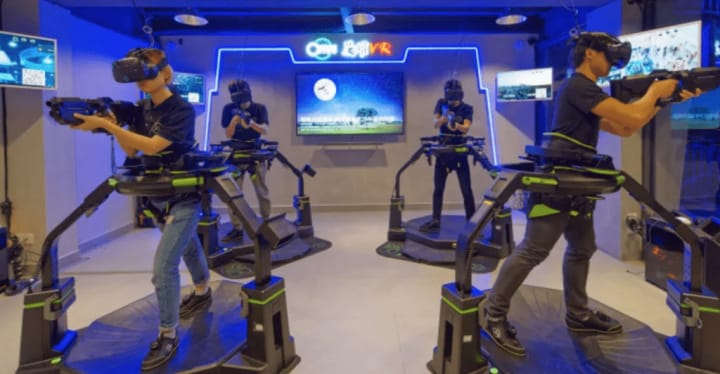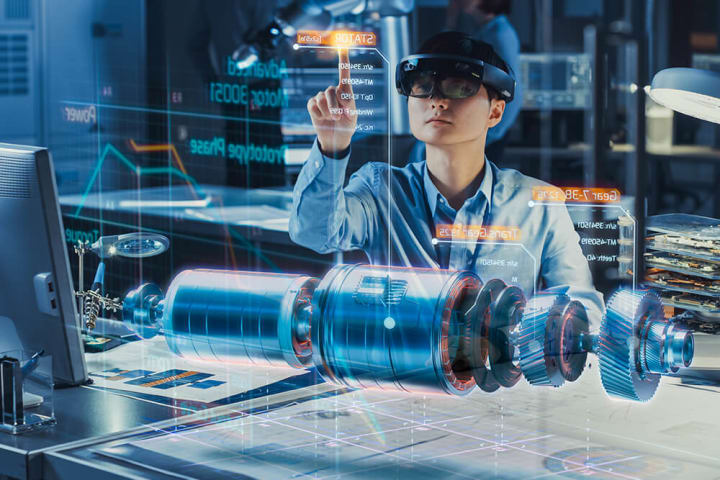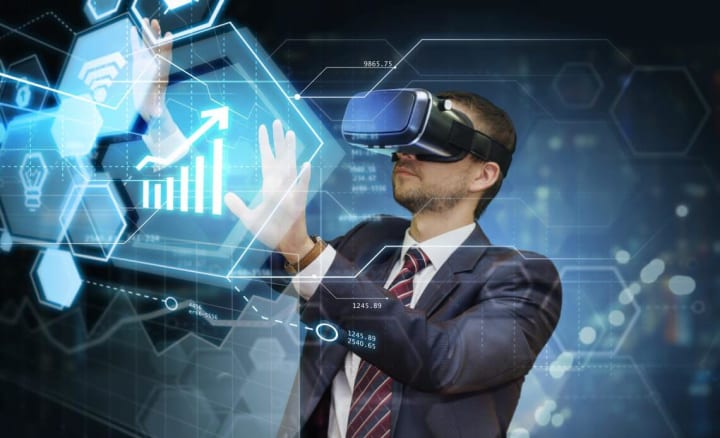Unveiling the World of VR: Exploring the Current State and Future Prospects
VR Technology Where we are now and what to expect in the near future.

## Introduction to Virtual Reality (VR)
Virtual Reality (VR) is an exciting technology that has taken the world by storm. It allows users to immerse themselves in a virtual environment, blurring the line between the real and the digital world. With VR, users can experience places, events, and scenarios that would otherwise be impossible to reach. This article aims to delve into the fascinating world of VR, exploring its current state and future prospects.
Understanding How VR Headsets Work
At the core of the VR experience lies the VR headset. These devices are designed to create a virtual world that users can interact with. But how do VR headsets work? The answer lies in a combination of advanced technologies. Firstly, the headset tracks the user's head movements using sensors, allowing them to look around and explore the virtual environment. Secondly, high-resolution displays inside the headset provide a lifelike visual experience, ensuring that users feel fully immersed in the virtual world. Lastly, spatial audio technology enhances the experience by providing realistic soundscapes that match the user's movements within the virtual environment.

The Technology Behind Virtual Reality
Virtual reality technology is a complex amalgamation of various components. One crucial element is the tracking system, which accurately detects the user's movements in real-time. This is achieved through a combination of sensors, cameras, and motion tracking technology. Another essential component is the graphics processing unit (GPU), responsible for rendering the high-resolution visuals in real-time. Without a powerful GPU, the VR experience would be laggy and unconvincing. Additionally, VR requires a robust computing system to handle the intense processing demands. This includes a fast processor, ample RAM, and sufficient storage space.
Real-World Applications of Virtual Reality
Virtual reality has found applications in various industries, revolutionizing the way we work, learn, and entertain ourselves. In the healthcare sector, VR is being used for medical training, allowing doctors and surgeons to practice complex procedures in a safe virtual environment. It is also being employed as a therapy tool for patients with anxiety disorders or phobias. In the education sector, VR is enhancing traditional learning methods by providing immersive experiences that transport students to historical events or scientific phenomena. In the entertainment industry, VR has opened up new possibilities for gaming, allowing players to step into the shoes of their favorite characters and explore virtual worlds like never before.
Virtual Reality Examples in Different Industries
Let's explore some specific examples of how virtual reality is being utilized in different industries. In the architecture and real estate sector, VR is transforming the way buildings are designed and sold. Potential buyers can take virtual tours of properties, allowing them to visualize the space and make informed decisions. In the automotive industry, VR is used for designing and testing vehicles, enabling engineers to identify flaws or make improvements before physical prototypes are built. In the tourism sector, VR is being used to offer virtual travel experiences, allowing users to explore famous landmarks and exotic destinations from the comfort of their homes.

The Current State of VR Technology
The current state of VR technology is impressive, with significant advancements being made in recent years. VR headsets have become more affordable, accessible, and user-friendly. Major players in the tech industry, such as Oculus, HTC, and Sony, have released high-quality VR headsets that offer immersive experiences. The graphics and display technology have also improved, providing more realistic visuals. However, there are still some limitations to overcome, such as the need for powerful computing systems and the challenge of creating truly realistic haptic feedback. Nonetheless, VR has come a long way and is now poised for even greater growth.
Future Prospects and Trends in Virtual Reality
The future of virtual reality holds immense potential. As technology continues to evolve, we can expect VR experiences to become even more immersive and lifelike. Advancements in haptic feedback technology will allow users to feel and touch virtual objects, further blurring the line between reality and virtuality. The development of wireless VR headsets will enhance mobility and make VR more accessible to a wider audience. Additionally, the integration of VR with other emerging technologies like artificial intelligence and augmented reality will open up new possibilities and applications.

Advantages and Limitations of Virtual Reality
Virtual reality offers numerous advantages across various fields. It provides immersive and engaging experiences, making it an effective tool for education, training, and entertainment. VR can also simulate dangerous or expensive scenarios, allowing users to learn and practice without real-world risks or costs. However, there are limitations to consider. VR can be physically and mentally demanding, causing discomfort or motion sickness in some individuals. The cost of VR equipment and the need for powerful computing systems can also be barriers to widespread adoption. Overcoming these limitations will be crucial for the continued growth and success of VR technology.
How Virtual Reality Is Revolutionizing Various Fields
Virtual reality has the potential to revolutionize various fields, transforming the way we live, work, and interact. In the healthcare sector, VR is enabling remote surgeries and telemedicine, bringing medical expertise to underserved areas. In the automotive industry, VR is streamlining the design and testing process, reducing costs and time-to-market. In the field of architecture and interior design, VR is revolutionizing the way spaces are conceptualized and presented to clients. The applications of VR are vast and varied, and its impact on different industries will continue to expand.

Exploring Different Types of VR Experiences
Virtual reality offers a wide range of experiences, catering to different interests and preferences. Gaming is one of the most popular applications of VR, with a plethora of immersive and interactive games available. Beyond gaming, VR can be used for simulations, allowing users to experience scenarios like flying an airplane or performing surgery. VR can also be used for storytelling, creating immersive narratives that transport users into fictional worlds. Additionally, VR can be used for social experiences, allowing users to interact with each other in virtual environments. The possibilities are endless, and as VR technology evolves, we can expect even more diverse and exciting experiences to emerge.
Conclusion: The Future of Virtual Reality
Virtual reality has come a long way since its inception and is poised for a bright future. As the technology continues to evolve and become more accessible, we can expect VR to revolutionize various industries and aspects of our lives. From education and healthcare to entertainment and design, the applications of VR are vast and promising. However, there are still challenges to overcome, such as improving comfort and reducing costs. But with continued innovation and investment, virtual reality has the potential to shape the way we experience the world, opening up new realms of possibility and transforming our reality as we know it.






Comments
There are no comments for this story
Be the first to respond and start the conversation.